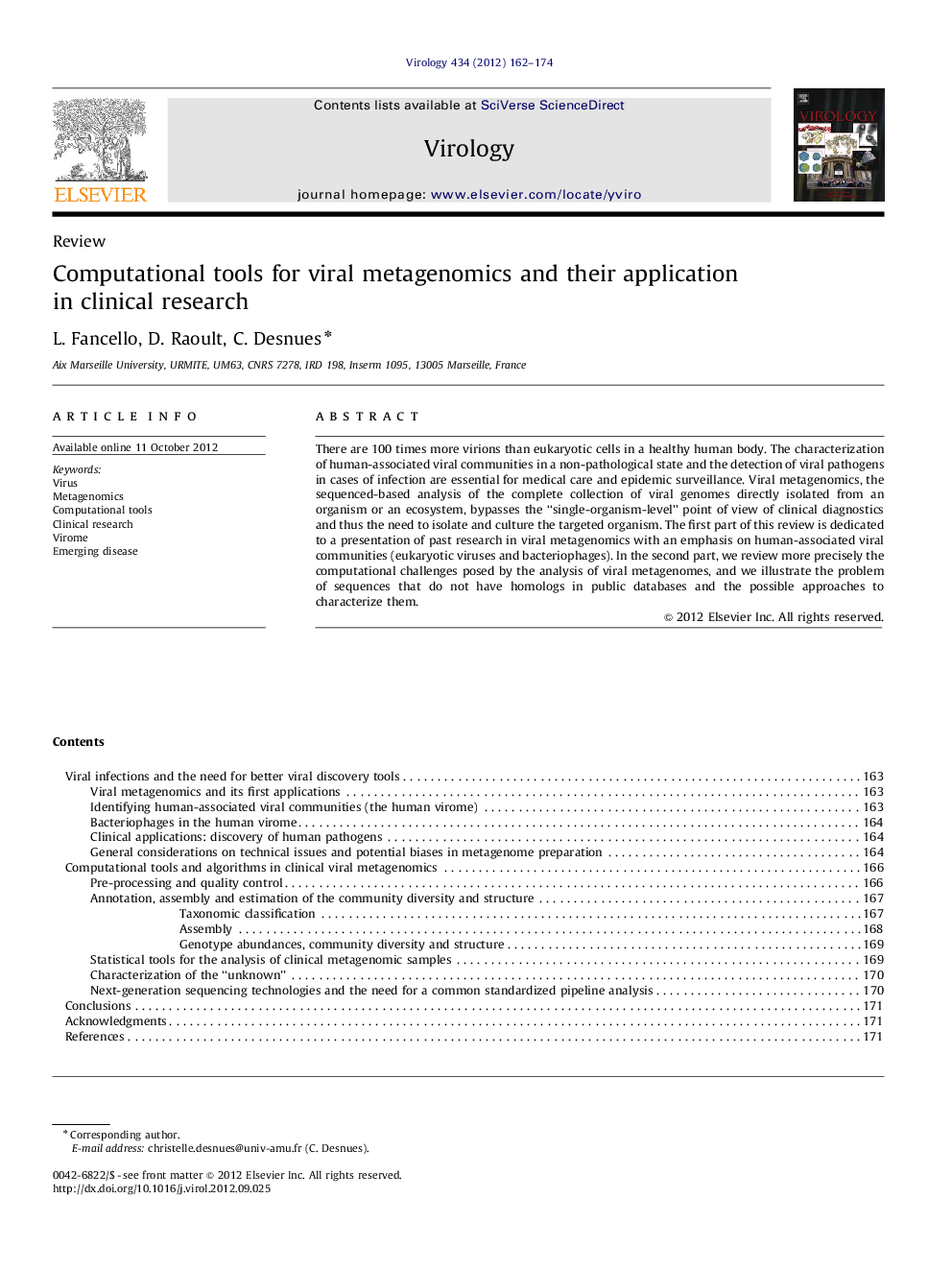| Article ID | Journal | Published Year | Pages | File Type |
|---|---|---|---|---|
| 3424275 | Virology | 2012 | 13 Pages |
There are 100 times more virions than eukaryotic cells in a healthy human body. The characterization of human-associated viral communities in a non-pathological state and the detection of viral pathogens in cases of infection are essential for medical care and epidemic surveillance. Viral metagenomics, the sequenced-based analysis of the complete collection of viral genomes directly isolated from an organism or an ecosystem, bypasses the “single-organism-level” point of view of clinical diagnostics and thus the need to isolate and culture the targeted organism. The first part of this review is dedicated to a presentation of past research in viral metagenomics with an emphasis on human-associated viral communities (eukaryotic viruses and bacteriophages). In the second part, we review more precisely the computational challenges posed by the analysis of viral metagenomes, and we illustrate the problem of sequences that do not have homologs in public databases and the possible approaches to characterize them.
► We review past research in viral metagenomics with an emphasis on human-associated viral communities (eukaryotic viruses and bacteriophages). ► We expose the computational challenges posed by the analysis of viral metagenomes. ► We illustrate the problem of sequences that do not have homologs in public databases and the possible approaches to characterize them.
